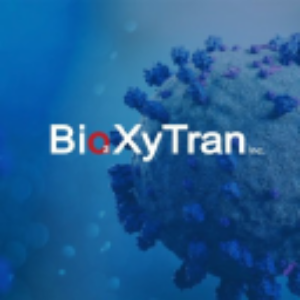Bioxytran’s Groundbreaking Stroke & Alzheimer’s Tech Gains Validation That Measures Oxygenation Uptake During Strokes
Rhea-AI Summary
Positive
- FDA-approved MDX Viewer technology for measuring tissue oxygenation
- Scientific validation of clinical development program through published research
- Potential breakthrough in stroke and Alzheimer's treatment with UOC technology
- Unique testing model using Mongolian gerbil brain provides strong predictive value for clinical trials
Negative
- Company still in clinical stage with unproven commercial products
- Trading on OTCQB market indicates early-stage development status
News Market Reaction 1 Alert
On the day this news was published, BIXT gained 6.47%, reflecting a notable positive market reaction.
Data tracked by StockTitan Argus on the day of publication.
Mongolian Gerbil Research Unlocks Critical Insights for Ischemic Stroke and Neurodegenerative Disease Treatments
BOSTON, MASSACHUSETTS, June 03, 2025 (GLOBE NEWSWIRE) -- BIOXYTRAN, INC. (OTCQB: BIXT) (the “Company”), a clinical stage biotechnology company developing drugs to treat stroke and Alzheimer's disease, announced that Bioxtran’s Science Advisor Prof. Avraham Mayevsky’s book titled The Mongolian Gerbil Brain: Mitochondrial Function, Vasculature, and Pathophysiological States was published by a publishing house, Springer. It is available by eBook or Hardcover. The publication serves as a scientific cornerstone for Bioxytran’s clinical development program of the universal oxygen carrier (UOC) in ischemic stroke and Alzheimer’s disease, and is directly tied to the use of the MDX Viewer as an analytical method to detect a brain regions response to the addition of a UOC. The device has FDA approval to measure tissue oxygenation.
https://link.springer.com/book/10.1007/978-3-031-69549-0
Bioxytran is pioneering a transformative approach to treating ischemic stroke and neurodegenerative disease. The UOC is capable of replacing hyperbaric oxygen treatment (HBOT) by efficiently delivering therapeutic type of oxygen at the cellular level versus a charged version of oxygen prevalent in HBOT treatment called reactive oxygen species (ROS). This breakthrough is powered by the MDX viewer that provides real-time metabolic insights – a crucial element of Bioxytran’s regulatory approach.
The Mongolian gerbil brain is special in that it lacks the vasculature compensatory mechanisms that can deal with decreased blood flow in the event of a stroke. Since the blood vessels in the Mongolian gerbil brain have no coping mechanism it makes them ideal in studying stroke pathophysiology. The research compiled in this publication further validates Bioxytran’s scientific and clinical approach, positioning the company on the cutting edge of advancements in brain health and neuroprotective treatments.
“This research is paving the way for substantial advances in the understanding of the pathology of stroke and other neurodegenerative diseases, said Avraham Mayevsky, Member of Bioxytran’s Medical Advisory Board. “One of the biggest challenges in in clinical trials is determining the efficacy of a drug. This gerbil brain model has great predictive value in ischemic stroke and Alzheimer’s disease. The gerbil model coupled with the MDX Viewer will provide us amazing insight in the pathogenesis of stroke and neurodegenerative diseases. Over 60 years went toward the development of the book which highlights a model of how brain anomalies are detected using this device.”
About Bioxytran, Inc.
Bioxytran, Inc. is at the forefront of developing complex carbohydrate-based therapeutics to address critical unmet medical needs in its three core platform technologies. These include virology, cancer metastasis, and oxygen transport. In addition to ProLectin-M, Bioxytran is advancing programs for pulmonary fibrosis and stroke treatment. When utilized by paramedics at the time of diagnosis BXT-25 has the possibility of reducing what is known as the time until needle by over
Investor Relations
Michael Sheikh
509-991-0245
mike.sheikh@bioxytraninc.com
Forward-Looking Statements
This press release includes forward-looking statements as defined under federal law, including those related to the performance of technology described in this press release. These forward-looking statements are generally identified by the words “believe,” “expect,” “anticipate,” “estimate,” “intend,” “plan,” and similar expressions, although not all forward-looking statements contain these identifying words. Such statements are subject to significant risks, assumptions and uncertainties. Known material factors that could cause Bioxytran’s actual results to differ materially from the results contemplated by such forward-looking statements are described in the forward-looking statements and risk factors in the Company’s Annual Report on Form 10-K for the fiscal year ended December 31, 2023, and those risk factors set forth from time-to-time in other filings with the Securities and Exchange Commission. Bioxytran undertakes no obligation to correct or update any forward-looking statement, whether as a result of new information, future events, or otherwise, except to the extent required under federal securities laws.









